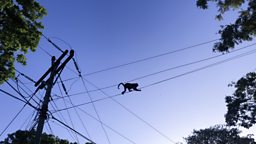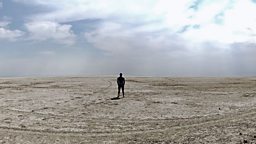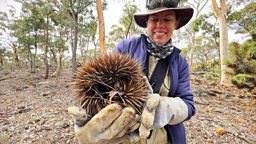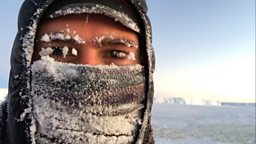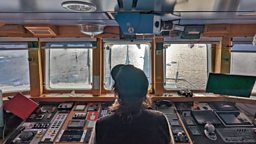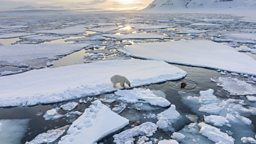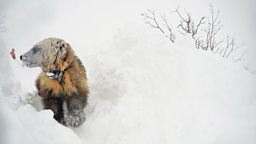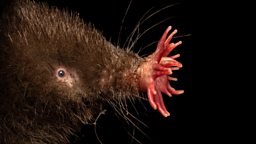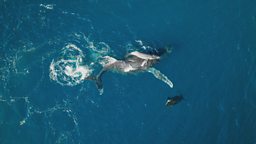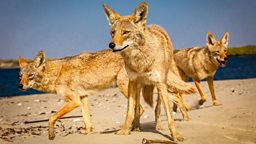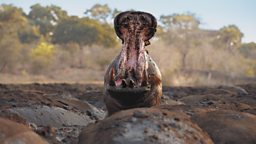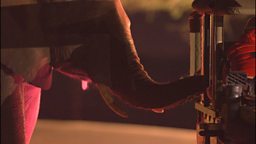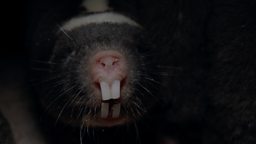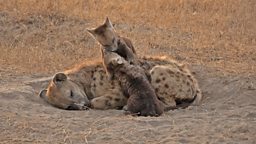High stakes on the high seas
By Mammals Assistant Producer, Sarah Jane Walsh
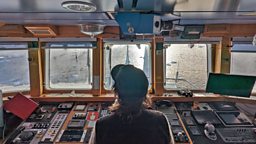
Filming the fleeting life-stage of a new-born harp seal proved to be one of the biggest challenges of the Cold episode. Harp seals live almost their entire lives in open water, coming up onto the ice for just 12 days each year to give birth. During this brief window, pups must make the most of every moment with their mothers, in preparation for being propelled into independence. With the help of their mother’s fat-rich milk, they gain over 2kg a day, tripling their birth weight by the time they wean. The team were determined to film the moment the new pups are thrust from the safety of their mother’s womb into the frigid Arctic.
filming wildlife is high stakes and high reward
The team had originally planned to film in Canada. However, a poor ice year meant we had to cancel at short notice - just a few weeks before departure. With hearts set on filming the ephemeral habitat the sea ice provides, and the race against time the harp seals must endure, we set into action to relocate to a huge area of pack-ice off eastern Greenland, known as the ‘West Ice’. But it would not be easy to get there!
The outermost edge of the West Ice lies halfway between Greenland and Jan Mayan island - approximately 150 miles offshore. Jan Mayan however has no ports and the nearest settlement in Greenland is just 300 people; without any local ships or helicopters available we chartered a ship from Norway to sail the 850 nautical miles to reach the ice.
The destination (West Ice) is a constantly shifting floating habitat which is at the mercy of currents pushing it down the Greenland coastline, as a result, the exact location of the pupping ground is never the same. But filming wildlife is high stakes and high reward - unlike working with paid actors and sets – wildlife is never guaranteed, and we could come back without a single shot. Finding the harp seals in such a vast maze of ice would be near impossible without help.

Fortunately, the team were not alone in this venture. A team of scientists from the Institute of Marine Research (IMR) in Norway and a group of students from The Arctic University of Norway (UIT) – would also be heading to the ice to conduct fieldwork and a bi-decadal population survey of the seals. Armed with satellite data and a helicopter - the scientists locate clusters of seals – deploying GPS trackers into the ice to track the movement of both ice and seals.
From the bridge the scene is apocalyptic – towering waves coming from all directions – the wind speed reads 30m/s (67mph) – the waves crashing over the bow and occasionally engulfing the bridge.
With scientific support, we felt confident of finding the seals. But we also needed to be able to film them as never seen before, in just 12 days! To do this, the team equipped itself with the best tools for the job – for filming both above and below the water. Closed circuit rebreathers to help the camera team move silently underwater, hopefully putting the seals at ease and allowing us to get more intimate shots. Topside, a gyrostabilized system slung over the side of a small tender would allow the team to capture footage of the young pups and their mothers, without the need to get on the unstable ice flows - risking a plunge in the frigid waters.
With so much at stake, tensions were high before departing Tromsø. To make matters worse – as we knew could be the case at that time of year - the Arctic Ocean looked to be brewing a storm. It was a race against time to set sail, beat the weather and reach the ice to begin filming.
Eighteen hours into the journey the team were hit with the first storm. At force 7, the 42m ship fought against the waves. At one-point, restraints came loose on one of the tenders mounted on the back deck and it was almost lost to the ocean. Eventually the storm subsided, but little did the team know this was a warm-up for what was to come. We had planned 3.5 days to make the crossing from Tromsø to the West Ice, but 3 days in, we were not even halfway.
As the sea deteriorated again, and the ship began to roll on the mounting waves, the team hunkered down. At 2 am, an alarm drowns out the sound of the battering waves. Furniture and cases have been thrown around, some of the ship’s crew are hurrying down the corridors. The ship’s first mate appears and asks the team to stay awake. From the bridge the scene is apocalyptic – towering waves coming from all directions – the wind speed reads 30m/s (67mph) – the waves crashing over the bow and occasionally engulfing the bridge. The ship lurches side to side. But the captain is cool and collected, holding the position of the ship as best possible. In this moment you have no choice but to completely surrender to the present moment.
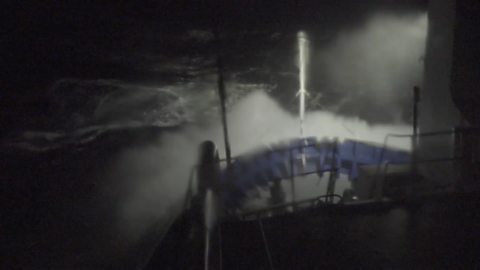
The crew experiences a heavy North Atlantic storm
A storm hits while the film crew are on route in search of harp seals.
As morning falls, we assess the damage. A door on the side of the ship has breached - flooding the kit room. More seriously, water crashing over the bow had flooded an electrical room in the hull, filling it with 10 tonnes of water: this was the cause of the alarm during the night. As we limped toward Jan Mayan Island it was all hands-on deck with the team bailing the icy water and removing ice from the rigging with sledgehammers. After a day and a half, the ship was back up and running and the team were raring to go and get to the ice – we had come so far and endured so much - we were determined to see this through.
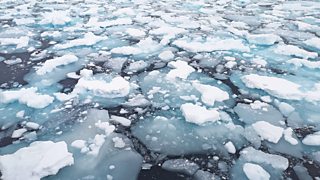
Six days after departing Tromsø, the team finally reached the West Ice, but the ice itself had not escaped unscathed from the storms. Now broken into much smaller fragments, huge swells were breaking over the ice, sweeping new-born harp seals off the ice and into the water - with no chance of survival. It was heart-wrenching to watch.
To compound the situation, with so much lose ice moving around, the captain informed us that it was too dangerous to enter the broken pack-ice - although our ship is ‘Ice Class’, it is not an ‘Ice Breaker’ – to do so would risk damaging the ship.
Already exhausted and with more severe weather on the way the difficult decision is made to abandon filming and set sail south, to Iceland. A mix of relief and disappointment hit the team, we fought so hard to be here, but there was no way to safety film in the conditions. Safety is paramount.
All was not lost however: to increase the chances of capturing the sequence, a smaller Mammals team had been deployed aboard the scientific research ship. Thankfully this precautionary planning paid off. The second team were able to get incredible drone footage from deep inside the colony showcasing thousands of seals and get onto the ice to film intimate shots of new-borns.
The strategy for a successful sequence is to have plans A, B and C! Although it was disappointing for the rest of the team, we all felt the joint success of the sequence. Would I go back to the West Ice? ...Definitely. I already have plan D, E and F bubbling away to make it an even bigger success the next time!

A busy harp seal mother takes a break
A harp seal mother briefly slips beneath the waves, away from her demanding pup.


